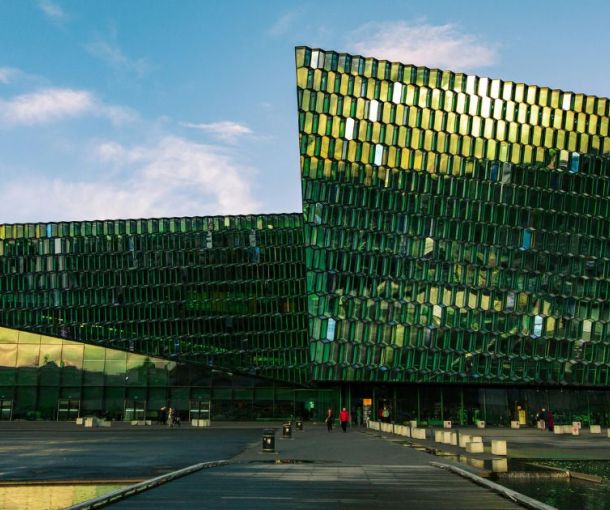
The Evolution of Building Access Systems: From Keycards to Smart Tech
In today’s fast-paced, tech-driven environment, how we access commercial buildings has evolved significantly. From traditional mechanical keys to magnetic keycards, and now to building management software with cloud-based platforms, biometrics, and artificial intelligence, building access has entered a new era — one defined by seamless integration, enhanced security, and user-centric design.
In 2024, HID’s State of Physical Access Control Report revealed a shift toward mobile access, touchless solutions, and smart building integration, with rising emphasis on sustainability, AI, and biometrics—highlighting a tech-driven, security-conscious future for access control systems.
Legacy systems, plagued by issues such as lost keycards, limited scalability, and the absence of remote control, have pushed property managers to adopt more advanced access control solutions. According to Build Australia, a key factor in the development of smart access control technologies has been the adoption of 5G connectivity, which enables mobile entry, real-time monitoring, and centralized control across multiple sites. Modernising these systems isn’t just about convenience — it’s a strategic move to enhance security, streamline operations, and future-proof assets in an increasingly digital world.
In this article, we’ll explore the latest trends reshaping building access and why property managers should embrace these innovations now.
Trend #1: Mobile and Cloud-Based Access Control
Mobile technology has become a cornerstone of modern access control. Instead of traditional keycards, users can now unlock doors using smartphones, smartwatches, and digital credentials via secure apps.
According to a 2023 report by MarketsandMarkets, the global market for mobile access control is projected to reach USD 10.4 billion by 2024, growing at a CAGR of 7.8% from 2024 to 2029.
Cloud-based platforms empower property managers to issue or revoke access remotely, monitor entry activity in real-time, and implement updates across sites instantly. This level of scalability is ideal for managing multi-site portfolios and adapting to flexible work arrangements.
Learn how MYBOS is enabling smarter, more connected buildings here.
Trend #2: Biometric Authentication
Once exclusive to high-security government sites, biometric authentication — including facial recognition, fingerprint scanning, and iris recognition — is now accessible to commercial properties.
Biometric systems significantly enhance identity verification, making unauthorised access far more difficult. Build Australia reports growing adoption of these technologies in buildings prioritising both security and user convenience.
However, managing biometric data responsibly is crucial. Implementing strong encryption, complying with data protection laws, and maintaining transparent policies are essential to protecting user privacy and maintaining trust.
Trend #3: Integration with Smart Building Ecosystems
Access control is increasingly integrated with broader smart building systems. When access data links with HVAC, lighting, CCTV, and occupancy sensors, building operations become more centralised and efficient.
For example, lighting and air conditioning can automatically adjust based on occupancy detected through entry systems. This integration not only optimises energy use but also enhances tenant comfort and operational oversight.
Trend #4: Real-Time Data and Predictive Analytics
Modern access control platforms generate vast amounts of real-time data. When paired with AI, this data can be analysed to uncover patterns, flag anomalies, and even predict potential security risks.
For property managers, this means more informed decisions on space utilisation, staffing, and security. Predictive analytics can identify unusual behaviors — such as access attempts during off-hours — and trigger automatic alerts or lockdowns.
Security Magazine highlights how AI-enabled systems are transforming physical security, allowing faster, more proactive responses.
Trend #5: Touchless and Contactless Experiences
The pandemic redefined our expectations around physical interaction. As a result, touchless entry solutions have become essential in maintaining hygiene and convenience.
Technologies like motion-activated doors, gesture-based access, voice control, and QR code check-ins are now standard in many commercial spaces. These tools not only reduce germ transmission but also deliver smooth, contact-free access for tenants and visitors.
Revfine reports that biometrics and touchless systems are revolutionising how businesses — especially in hospitality — manage identity verification and customer experiences.
Trend #6: Enhanced Cybersecurity in Physical Security
As access systems migrate online, they inherit the vulnerabilities of digital infrastructure. The convergence of physical and cyber security makes system protection a top priority.
Key security features now include encryption, multi-factor authentication, and zero-trust frameworks. Regular updates, compliance with cybersecurity standards, and robust network protections are essential to safeguarding data and access points.
A report by IBM reveals the average cost of a data breach in 2024 was USD 4.88 million — a stark reminder of the importance of cybersecurity in physical security systems.
Key Takeaways: Modernising Building Access for a Smarter Tomorrow
Looking forward, the next wave of innovation in building access will focus on personalisation, decentralisation, and sustainability:
- Decentralised identity management using blockchain could give users secure, self-controlled credentials.
- AI-powered personalisation will adapt access levels based on behavior and job roles.
- Sustainable access systems will support energy efficiency and environmentally conscious building design.
As buildings grow smarter, access control will become an even more integrated and strategic component of overall property management. The evolution of building access — from keys and cards to biometrics and AI — represents a shift toward safer, more flexible, and user-friendly systems. For property managers, staying ahead of these changes means delivering better tenant experiences and securing long-term asset value.
Now’s the time to evaluate your current access systems. Are they scalable, secure, and intuitive? If not, it may be time to modernise.
Explore more on the biggest questions tenants have when looking at your building here, and stay ahead of the curve by adopting smarter building access solutions.
Ready to future-proof your property with secure, modern access technology? Book a free demo or explore how MYBOS can support your building access management needs.





